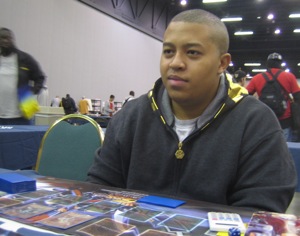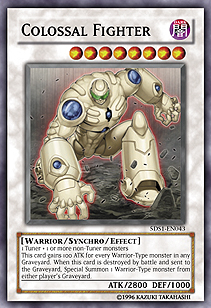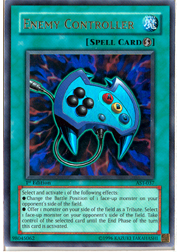 The Yu-Gi-Oh! Trading Card Game is constantly evolving. New cards are introduced often enough that there’s always some new innovation being made. Sometimes it’s big things like the introduction of Synchro monsters or Dark Armed Dragon, or sometimes it’s the introduction of an entirely new archetype. When Lightsworn were introduced, it was the birth of a top-notch deck from scratch.
The Yu-Gi-Oh! Trading Card Game is constantly evolving. New cards are introduced often enough that there’s always some new innovation being made. Sometimes it’s big things like the introduction of Synchro monsters or Dark Armed Dragon, or sometimes it’s the introduction of an entirely new archetype. When Lightsworn were introduced, it was the birth of a top-notch deck from scratch.
Since then, Lightsworn players have made little innovation. Compared to Monarchs or Dark Armed, which have been built and re-built with entirely different engines several times, Lightsworn have a lot less flexibility. Sending cards to the graveyard during the end phase needs to happen, so you have to keep monsters on the field. As far as most Lightsworn players are concerned, the best way to do that is with Necro Gardna and Honest. With all the graveyard-fuelling effects Lightsworn have, you can come by Gardnas pretty easily, and Honest can hide in your hand. As such, these monsters become reliable forms of defense, and the Lightsworn player doesn’t run too many defensive spell and trap cards as a result.
I tried to change that at Shonen Jump Championship Baltimore by adding defensive traps to the line-up, but found limited success. My mirror match with Lightsworn was weakened significantly (a factor which cost me the last round) because I simply couldn’t move as fast as other Lightsworn players. On the other hand, defense worked wonders against TeleDAD and Gladiator Beasts, both of which loved the Lightsworn matchup because it usually meant their plans would go uninterrupted by disruptive trap cards.
Felipe DeJesus wasn’t about to let that happen, though. He took Lightsworn to SJC Atlanta, and made it all the way to the final four with what’s easily the most teched-out version of Lightsworn I’ve ever seen:
Monsters: 26
3 Wulf, Lightsworn Beast
 3 Lumina, Lightsworn Summoner
3 Lumina, Lightsworn Summoner
2 Necro Gardna
1 Phantom of Chaos
2 Garoth, Lightsworn Warrior
3 Honest
2 Lyla, Lightsworn Sorceress
1 Neo-Spacian Grand Mole
1 Herald of Creation
3 Celestia, Lightsworn Angel
1 Plaguespreader Zombie
2 Judgment Dragon
1 Ehren, Lightsworn Monk
1 Jain, Lightsworn Paladin
Spells: 14
1 Heavy Storm
1 United We Stand
3 Charge of the Light Brigade
3 Solar Recharge
3 Enemy Controller
1 Monster Reincarnation
1 Foolish Burial
1 Monster Reborn
Traps: 3
1 Royal Decree
1 Phoenix Wing Wind Blast
1 Shadow-Imprisoning Mirror
The only thing it’s missing is a Dark Armed Dragon. You’re looking at this deck right now and probably thinking something along the lines of, "well how could that work?" That’s what I thought when I first read Jason’s tournament update in round 6. But DeJesus didn’t stop until the Top 4, so something has to be working here. TeleDAD dominates the Shonen Jump metagame right now, so for this deck to be able to make Top 4 like that, you know it has to handle TeleDAD rather well.
To understand how DeJesus’s build works, you have to look at the tech it runs. Obviously this deck is going to function like a regular Lightsworn deck a lot of the time. Lumina, Lightsworn Summoner and Judgment Dragon are still the keys to the strategy, but instead of relying so much on the end-phase effects of the Lightsworn monsters, DeJesus wants to buff up the cards he’s already drawn.
United We Stand hasn’t made it to the Top 16 in a while, and for good reason: equip spells are the poster boys for putting all your eggs in one basket. You lose the monster and the equip spell when the monster you equipped goes down. When destruction is commonly found in a Yu-Gi-Oh! duel, equips probably aren’t your best choice. But these days there’s actually little to no destruction. Mystical Space Typhoon and Breaker the Magical Warrior are even being taken out of decks, and right now all TeleDAD players really have to go on with is Dark Armed Dragon.
 The go-to problem solver for TeleDAD has always been big monsters. Colossal Fighter in particular is good against Lightsworn because it plays around Honest, and also because it’s usually the Synchro monster with the highest available ATK. That power lets the TeleDAD player smash Lightsworn monsters. Even Judgment Dragon can fall to Colossal Fighter’s massive ATK.
The go-to problem solver for TeleDAD has always been big monsters. Colossal Fighter in particular is good against Lightsworn because it plays around Honest, and also because it’s usually the Synchro monster with the highest available ATK. That power lets the TeleDAD player smash Lightsworn monsters. Even Judgment Dragon can fall to Colossal Fighter’s massive ATK.
Throw United We Stand into the mix and raw ATK power is no longer good enough. Now the opponent is going to have to do something like activate Phoenix Wing Wind Blast to blow away the monster you equipped, just to get rid of United. The result is an even trade and one more card that’s not going to be touching your copies of Judgment Dragon. Also, while it’s easy to clean up the equip by destroying the monster, it’s frequently just as easy to destroy the equip and then attack over the monster instead. Not so here, since Necro Gardna and Honest take care of that issue—making United We Stand that much more reliable for any given duel.
Check out that trap line-up. One of any of those three cards is going to help advance your position . . . a lot. Drawing either one of these traps in the opener will be very beneficial. It’s not too hard to see how Shadow-Imprisoning Mirror can ruin a TeleDAD player’s day, but even Royal Decree can shut down the Solemn Judgment cards and Phoenix Wing Wind Blast cards that allow TeleDAD players to handle Lightsworn.
The Wind Blast DeJesus plays looks lowly and insignificant, but I can tell you from experience that Wind Blast is more than meets the eye. The discard cost is used efficiently, dumping either a Gardna or a Lightsworn monster to be revived with Lumina later. It can even give you the fourth Lightsworn monster you need to special summon Judgment Dragon, so that the opponent feels the effect not only of losing one turn to the Wind Blast, but of the Lightsworn player speeding up as a result of being able to fuel the graveyard faster.
Plaguespreader Zombie is amazing in this deck, and it’s one of the reasons DeJesus plays Celestia, Lightsworn Angel. Clearing the field and sending Plaguespreader to the graveyard at the same time probably means winning the duel. It’s likely DeJesus can make another special summon or two, or have Honest to win the game in such a scenario. Foolish Burial can be played with Plaguespreader as well, and it also happens to be one of Celestia’s best friends: special summoning a copy of Wulf, Lightsworn Beast to tribute.
Enemy Controller is the final card I’ll talk about in this deck. It’s pretty clear that DeJesus’s build either controls the opponent or plays like Monarchs used to, dishing out constant chunks of damage followed up by a final push. That push usually comes in the form of Celestia, Lightsworn Angel or Judgment Dragon. However, the TeleDAD duelist is always waiting to make his or her responses and shut down your key plays. Enemy Controller helps you fight that.
How? The first way is by making game on the chain when the opponent thought he or she was dealing with a big threat. There’s nothing worse than using Wind Blast to save yourself from losing only to have the opponent chain Enemy Controller, tribute whatever you targeted with Wind Blast, and take your monster to attack directly for game anyway. Also, at the start of the turn DeJesus can make some plays that would force his opponents to activate Solemn Judgment. Trying to take control of a big Synchro is one of those things the opponent is going to have to stop. That frees up room for your Judgment Dragon to come down and win the game.
 also offers a way to take care of Synchro monsters. In addition to stealing them to pay for tributes, DeJesus can turn cards like Stardust Dragon and Red Dragon Archfiend to defense position so they can be dealt with through battle. There’s nothing like having Reinforcement of the Army and Enemy Controller, and being able to take out a Stardust. There are several monsters in this deck that can make that happen. Ehren, Lightsworn Monk obviously combos the best with Controller, allowing you to outright remove Synchros and send them back to the Extra Deck, or sending cards like Malicious back to the main.
also offers a way to take care of Synchro monsters. In addition to stealing them to pay for tributes, DeJesus can turn cards like Stardust Dragon and Red Dragon Archfiend to defense position so they can be dealt with through battle. There’s nothing like having Reinforcement of the Army and Enemy Controller, and being able to take out a Stardust. There are several monsters in this deck that can make that happen. Ehren, Lightsworn Monk obviously combos the best with Controller, allowing you to outright remove Synchros and send them back to the Extra Deck, or sending cards like Malicious back to the main.
Enemy Controller can also temporarily freeze a player for the turn. Right now, in an environment where big turns win games, being able to tribute your face-down Necro Gardna in response to Phoenix Wing Wind Blast to take an opponent’s monster and wall up with the monster you take will usually be the difference between winning and losing. Whether it’s for big purposes or little ones, Enemy Controller does it all, and it’s a card I think we’ll be seeing a lot more of as the format progresses.
—Matt Peddle